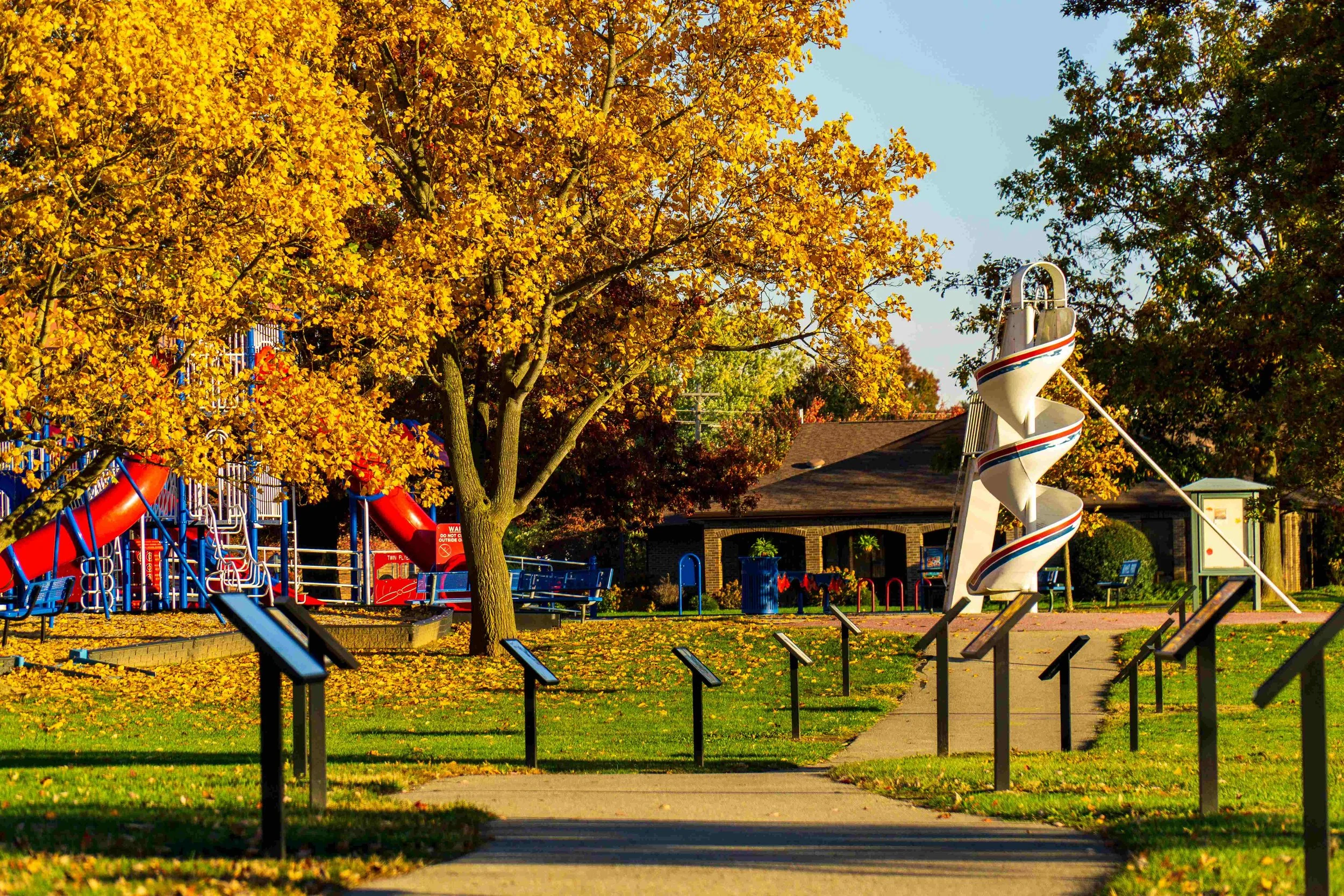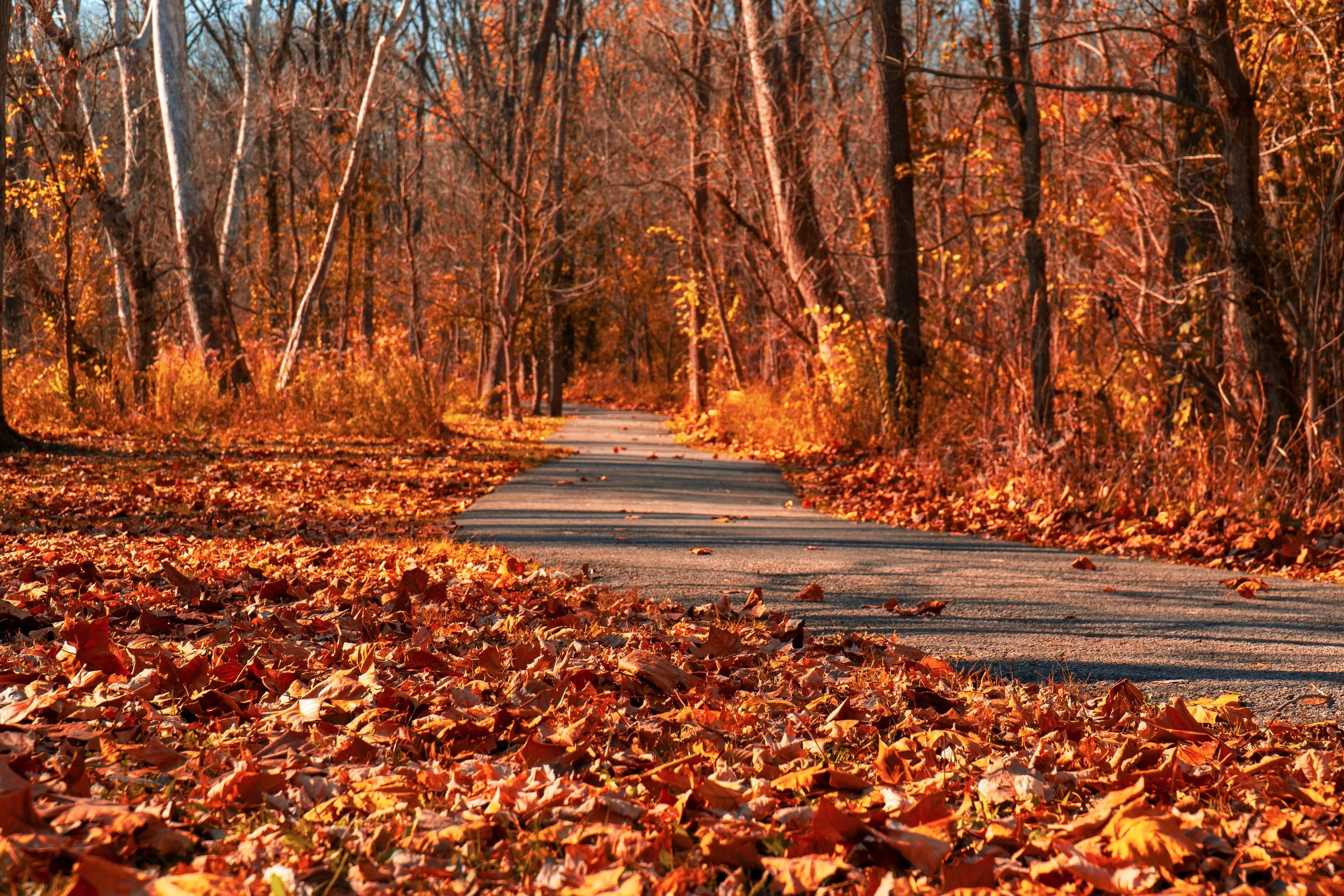Nature at Work: The Hidden Helpers of Fall
Fall in Hendricks County is often celebrated for its crisp air and colorful leaves—but beyond the beauty, our parks are alive with quiet, essential work. As the season changes, ecosystems shift into high gear, preparing for winter while laying the groundwork for renewal in spring. Parks like Echo Hollow offer us a front-row seat to this cycle, where bats, leaves, fungi, and countless other creatures play their part in keeping nature thriving.
Leaves: Nature’s Compost and Shelter
When deciduous trees shed their leaves each fall, they create far more than a colorful backdrop. Fallen leaves act as “nature’s compost,” breaking down over the winter to return vital nutrients like nitrogen and carbon to the soil.
Leaf litter also protects the forest floor—insulating soil from harsh temperature swings, holding in moisture, and reducing erosion. Just as importantly, it provides critical shelter for countless species. Bumblebee queens, moth and butterfly pupae, and woolly bear caterpillars all hibernate beneath the leaves, while toads, turtles, and shrews rely on the same cover for safety. Foraging birds such as sparrows and robins search the litter for insects, larvae, and seeds—finding the food they need to make it through the colder months.
What can you do? Leave the leaves! By allowing leaves to remain on your lawn or in your garden beds, you’re providing the same shelter and soil benefits at home that help entire ecosystems thrive in our parks.
Animals on the Move
Fall is also a time of preparation. Squirrels and mice work tirelessly to gather food and build reserves for winter hibernation. Jays scatter acorns across the forest, burying more than they retrieve—a natural system of seed dispersal that allows new trees to sprout in spring. Migrating birds and monarch butterflies follow the seasonal cues of shorter days and cooler temperatures, moving to warmer climates where food is plentiful. Parks provide the habitats that make these essential fall behaviors possible.
Echo Hollow and the Story of the Indiana Bat
Some of fall’s most remarkable work happens at Echo Hollow Nature Park, home to the endangered Indiana Brown Bat. The name itself honors these small but mighty creatures—bats that use echoes to navigate the dark and who gather together each fall in preparation for hibernation.
Indiana bats (Myotis sodalis) are known as the “social bat” for good reason. In winter, they cluster tightly in caves, conserving warmth, muffling sound, and alerting one another to danger. These behaviors help them survive, but the species still faces challenges. White-nose syndrome, a fungal disease, has devastated bat populations across the country. Habitat loss has made safe roosting spaces harder to find.
Parks like Echo Hollow help protect these vulnerable species while reminding us of their importance. Indiana bats consume vast numbers of insects, play a role in pollination, and add to the balance of our ecosystems. Their survival is a success story of belonging in nature—just as every leaf, bird, and seed has its place.
Fungi: The Forest’s Recyclers
Another hidden player in fall’s ecosystem is fungi. Mushrooms that appear on the forest floor are the fruiting bodies of vast underground networks called mycelia. These networks break down fallen leaves, rotting wood, and even animal remains, returning nutrients to the soil and fueling the cycle of growth. Fall’s damp, cool conditions are the perfect trigger for this quiet but critical work.
Why Supporting Parks Matters Year-Round
Together, these natural systems remind us that fall is not an ending—it is the beginning of renewal. Every leaf decomposing, every acorn cached, every bat roosting in Echo Hollow contributes to a healthier, more vibrant environment for us all.
At the Parks Foundation of Hendricks County, we are proud to support the spaces where this work happens. With help from our donors and partners, we can ensure that parks remain places where ecosystems thrive and where people can experience the wonder of nature’s hidden helpers.


